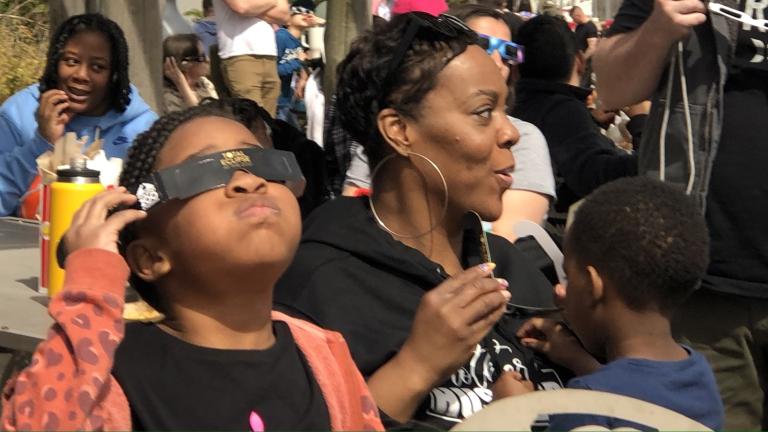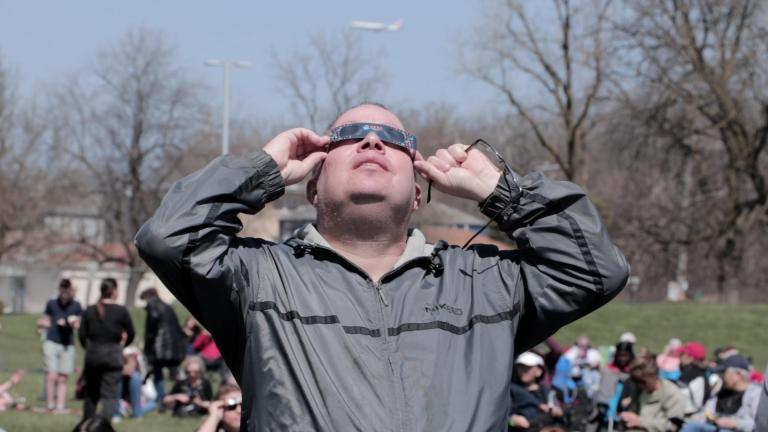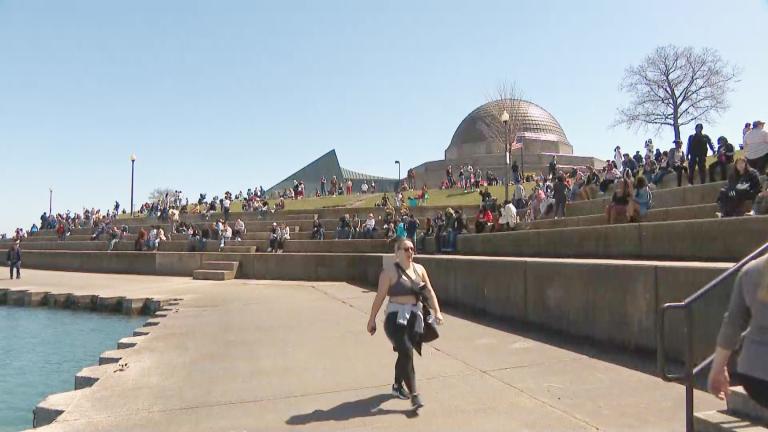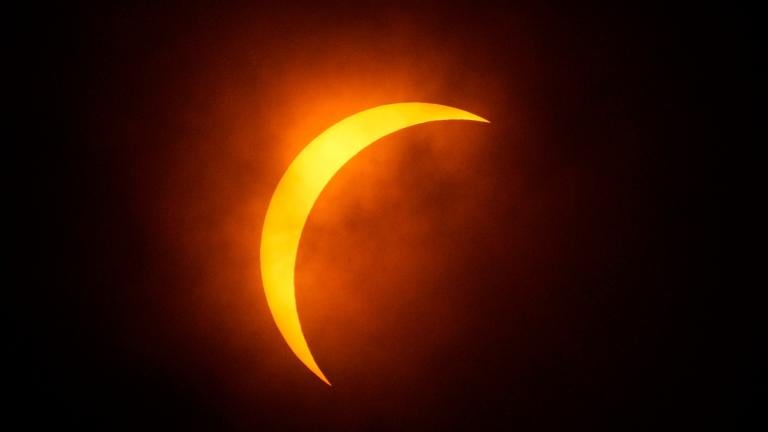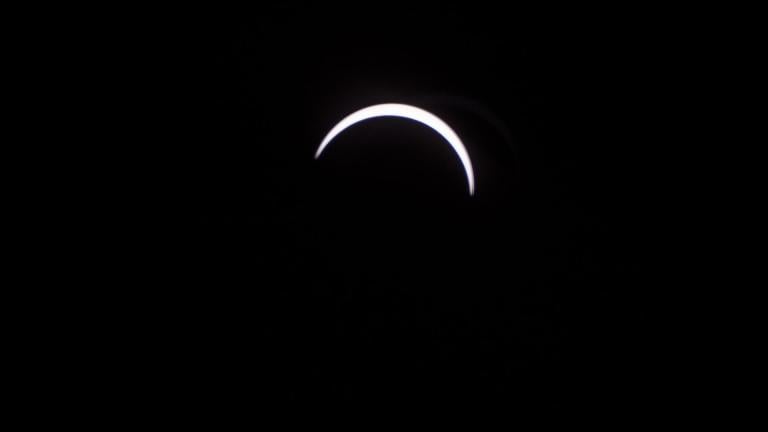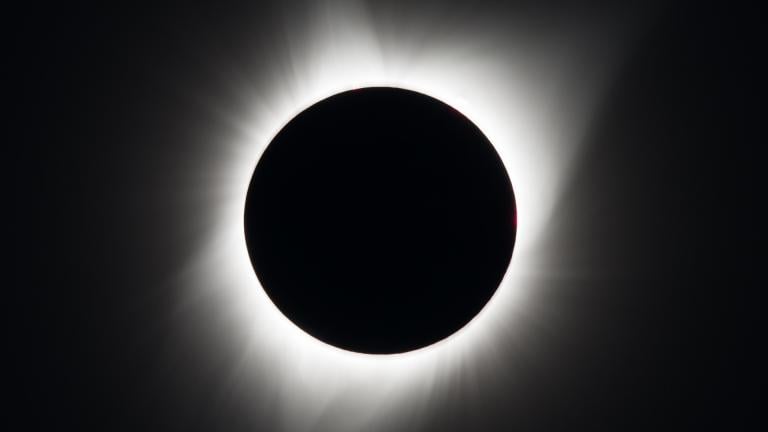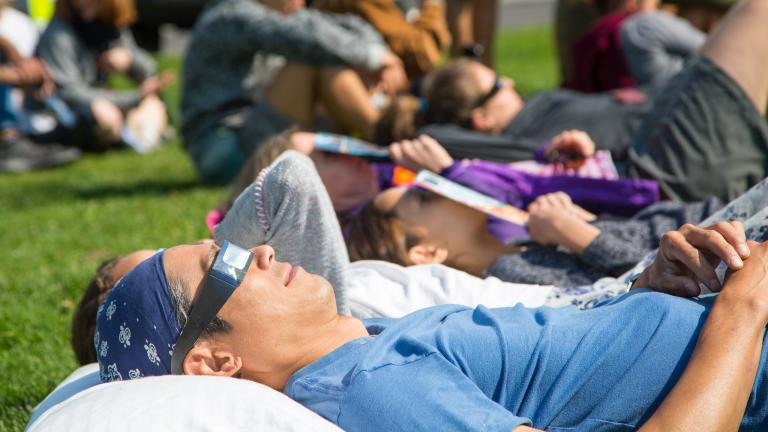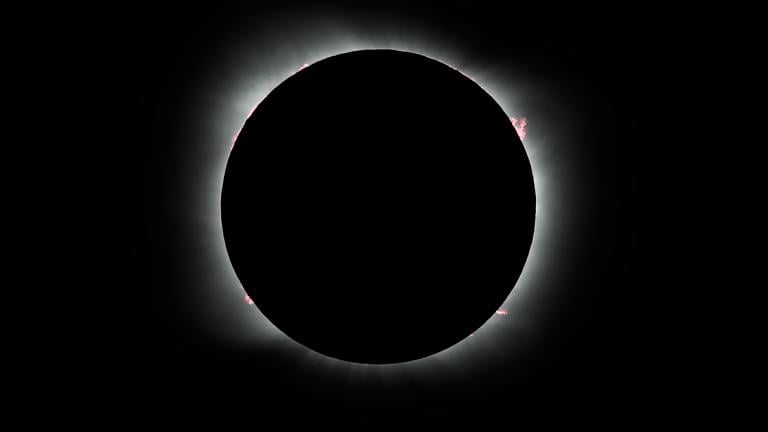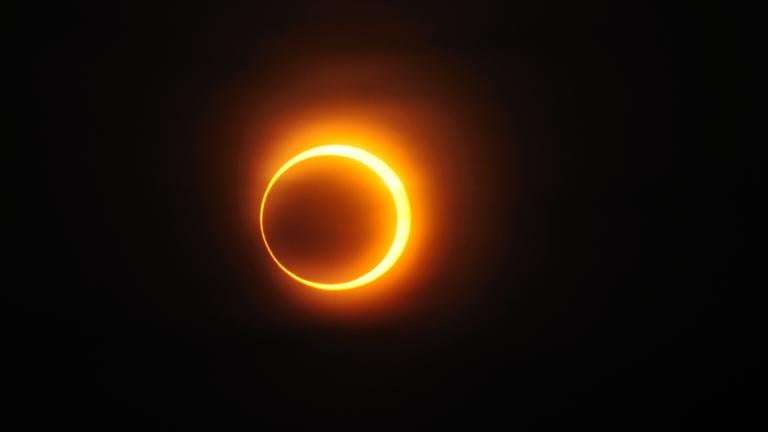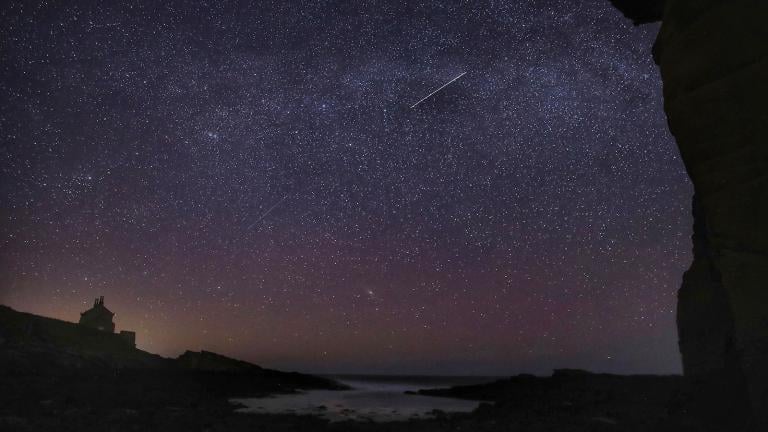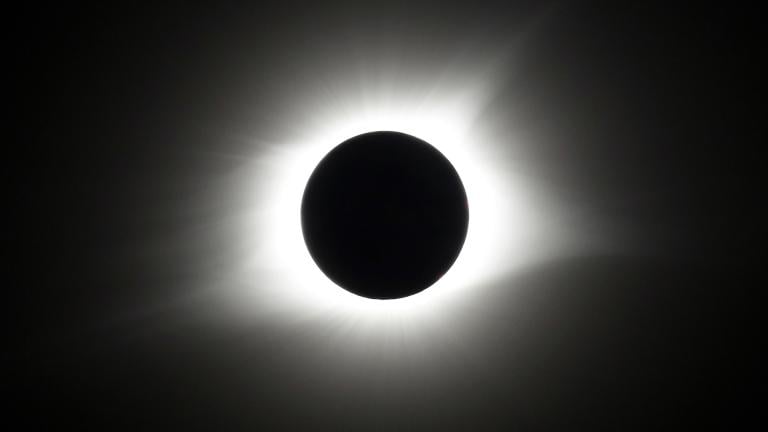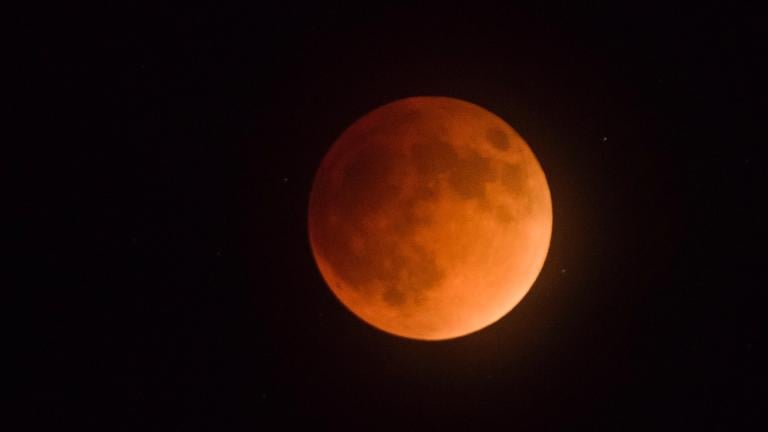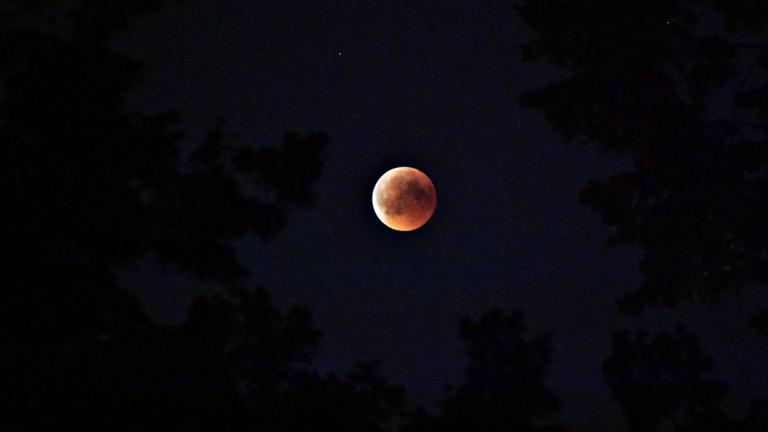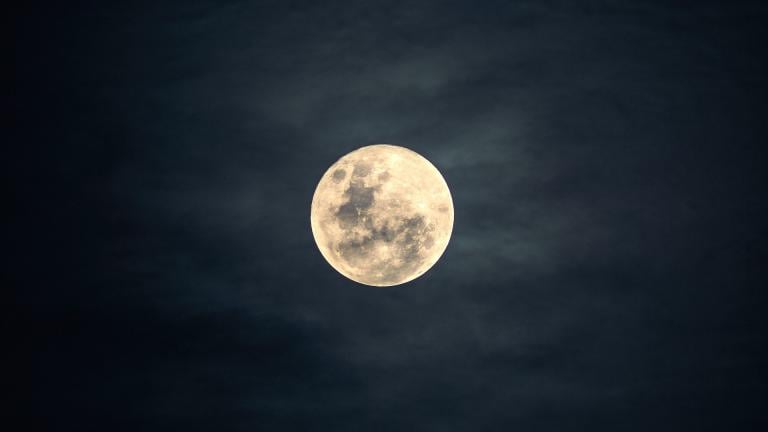Instead of trashing those vital eclipse glasses, recycle them at any one of dozens of Chicago locations.
eclipse
Nearly 2,000 people gathered at Triton College in west suburban River Grove to view the solar eclipse Monday afternoon.
Hundreds of people gathered outside the Adler Planetarium in downtown Chicago for a viewing party. People brought telescopes, cameras and the necessary protective eyeglasses.
It promised to be North America’s biggest eclipse crowd ever, thanks to the densely populated path and the lure of more than four minutes of midday darkness in Texas and other choice spots. Almost everyone in North America was guaranteed at least a partial eclipse, weather permitting.
A total solar eclipse is set to move across the United States Monday afternoon with the path of totality sweeping from Texas up to Maine. Watch as it unfolds with NASA scientists.
The Illinois Department of Transportation learned a lot from the traffic jam “hangover” that followed 2017’s solar eclipse: mainly to warn motorists to expect gridlock.
The Great American Eclipse is almost here. Here’s how to make the most of the experience in Illinois and the Chicago area.
If you've been sleeping on the North American total solar eclipse of 2024, it's time to start paying attention. The big event — on April 8 — is fast approaching and folks who haven't prepared could find themselves left out in the dark.
The alignment of sun, earth and moon will plunge the city into darkness, and as long as the maddeningly unpredictable Northeast Ohio weather cooperates, people will view a spectacle that lasts just under four minutes but occurs only three times in a 638-year span above the city.
On Saturday, Oct. 14, Chicago astronomer Joe Guzman advises Chicagoans to turn their eyes to the skies — but only with proper protection — to witness a partial solar eclipse.
Known as one of the oldest-recorded meteor showers, the Lyrids are expected to produce 10 to 15 meteors per hour for three nights centered around its peak of 8:06 p.m. CST on Saturday, according to EarthSky.
It’s been less than six years since a total solar eclipse cut across the U.S., from coast to coast. That was on Aug. 21, 2017. The next one is predicted to hit Illinois.
Election Day 2022 will kick off with a pre-dawn total lunar eclipse. There won't be another like it until March 2025.
For once, the weather cooperated in Chicago. Astronomers at the Adler Planetarium proclaimed: “What a stellar view!”
If the skies are clear, Chicagoans will have an excellent chance of seeing the eclipse Friday morning, with the best hours for viewing the event being approximately 1:30-4:30 a.m.
If the skies over Chicago cooperate over the next 12 hours, the moon will offer a very rare triple feature.

